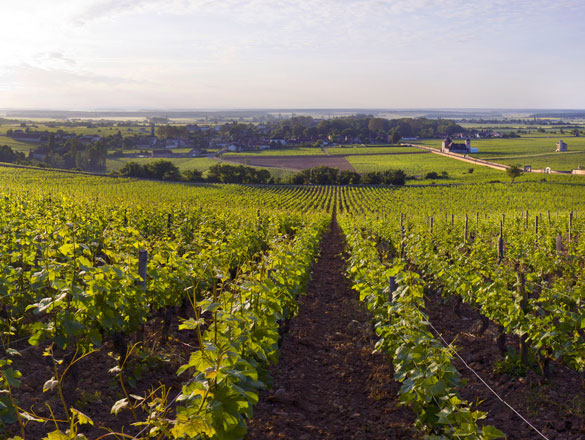

The vineyards of Bourgogne produce some great wines with a historical and international reputation. However, the region is not simply limited to its iconic appellations. In addition to its Village Premier Cru and Grand Cru AOCs, it also produces a range of wonderful Régionale and Village appellations to explore.
You will also find a full list of the Bourgogne’s Climats and lieux-dits on this page.
Check out the complete list of the 84 Bourgogne appellations.
However, your exploration has only just begun. Bourgogne wines have never before offered such high quality. Besides our range of internationally celebrated wines, try some of our lesser-known appellations where there are lots of surprises in store.
And for a fun way to find out more about the wines on offer, try out our “Which Bourgogne wine is right for me?” quiz, or check out Bourgogne Maps to take an interactive tour of the region.
Grand Cru appellation
VIGNOBLE DE LA CÔTE DE NUITS
11 septembre 1936
Reds - Pinot Noir.
Whites - Chardonnay.
Area under production*:
1 hectare (ha) = 10,000 m2 = 24 ouvrées.
Reds: 10.13 ha
Whites: 0.66 ha
Average annual yield**:
1 hectolitre (hl) = 100 litres = 133 bottles.
Reds: 255 hl (33,915 bottles).
Whites: 19 hl (2,527 bottles).
*In 2022 **5-year average, 2017-2021
Appellation Grand Cru of the Côte de Nuits region (Côte-d’Or).
Producing commune: Chambolle-Musigny.
On the label, the words GRAND CRU must appear directly below the name of the appellation in letters of exactly the same size.

Red: Musigny has a deep but delicate coloration between crimson and magenta. Its bouquet evokes wild-rose, violet, and morning dew, as well as blackcurrant and raspberry. With age it develops notes of leather, fur and humus. The sappy body is wonderfully balanced, tannic and complex, long in the mouth, and perfectly well-bred. An unusual feature of the appellation is the 0,66 hectares of Chardonnay planted here by the De Vogüé family.
White: Musigny is in a class of its own with its flamboyant character and its bouquet of violet and almond.

Red: this brilliant scion of the Côte de Nuits family has a preference for meat - natural enough given the power of its tannins and the lingering complexity of its aromas. But its individuality rests on the breadth of its sensuality in the mouth and the distinction that results from this. This lends it a particular affinity for fine poultry (roasted or stuffed) and feathered game in sauce, braised or - better still - patiently roasted. Glazed duck and crispy roast lamb would be at ease with this iconic Bourgogne, while cheeses like Cîteaux, Coulommiers or Brie de Meaux will also respond to its generous character.
Serving temperature: 14 to 16°C.
White: if by good fortune you should ever find yourself in the presence of a white Musigny, match it with only the most delicate of dishes - lobster, crawfish, or freshwater crayfish with a butter, cream, and truffle sauce (sauce nantua).
Serving temperature: 12 to 14°C.

The village of Chambolle-Musigny lies in the very heart of the Côte de Nuits.
The Musigny vineyards lie above the Clos de Vougeot between the Les Amoureuses Premier Cru Climat and the Echezeaux Grand Cru. The altitude varies from 260 to nearly 300 m. The southern portion rises towards the plot known as Combe d’Orveau which marks the boundary between Musigny and Flagey-Echezeaux.
The Musigny family, which gave its name to the appellation, is now extinct but held important posts at the court of the Dukes of Bourgogne in the 14th century. The boundaries of the MUSIGNY appellation were formally laid down on 16 April 1929, before the advent of the AOC system. It has always been a Grand Cru.

The gradient on this rocky limestone terrace is quite steep (8-14%). The soils, though not deep, are enriched by red clay in the upper section and are generally more clayey and less limey than the neighbouring Grands Crus. The rocks are of Jurassic origin (approx. 150 million years BC).
